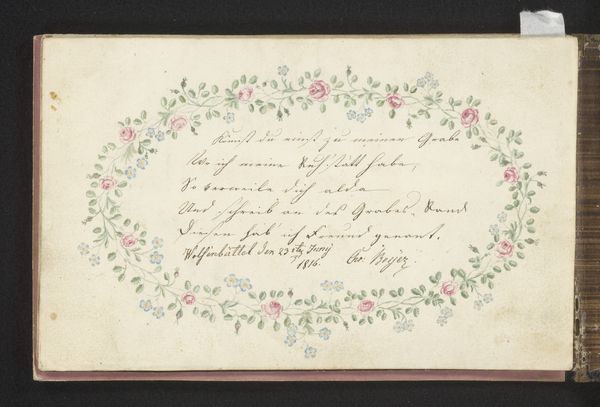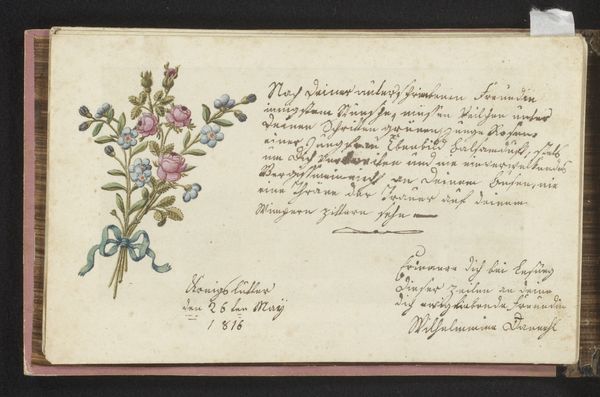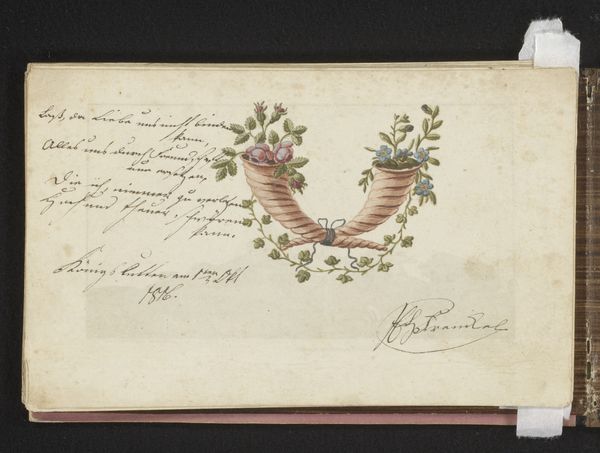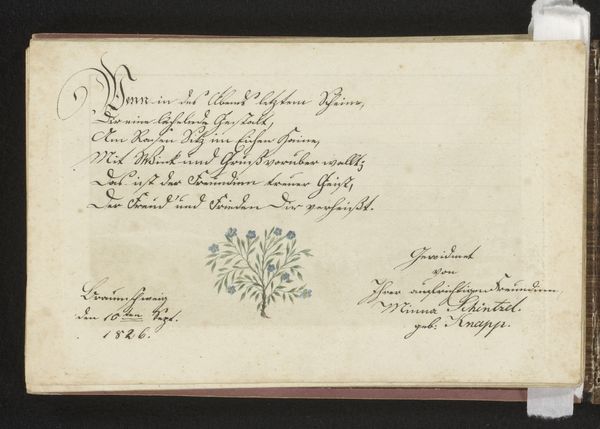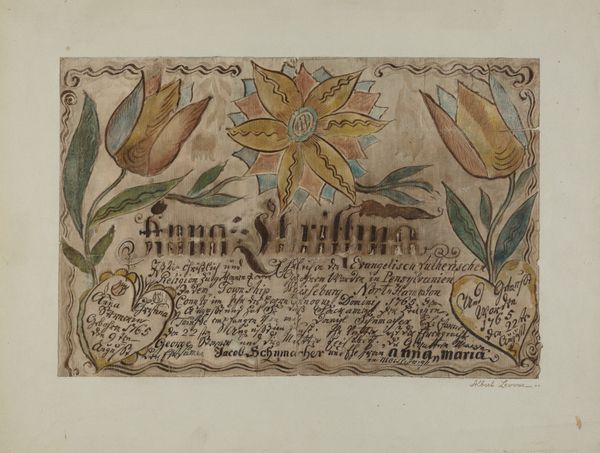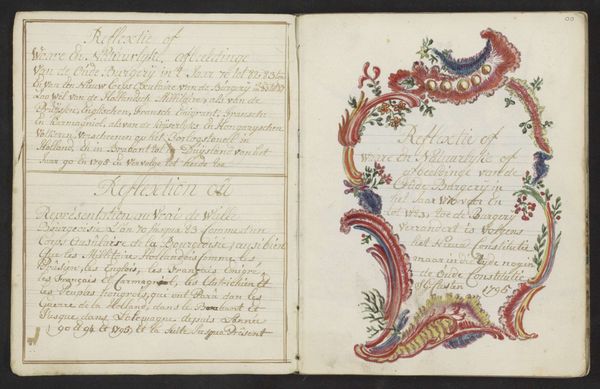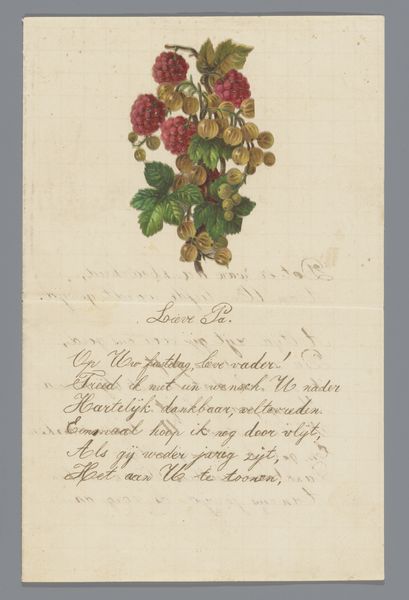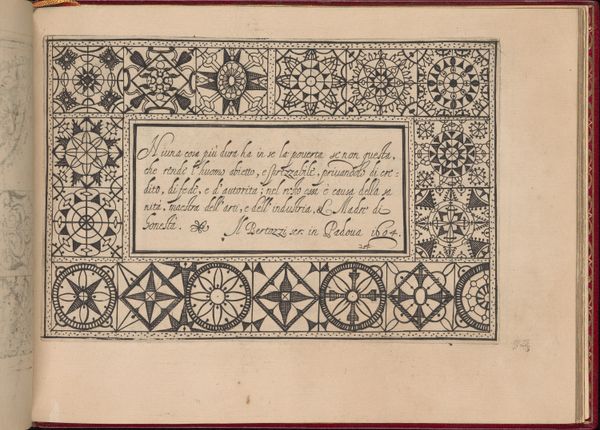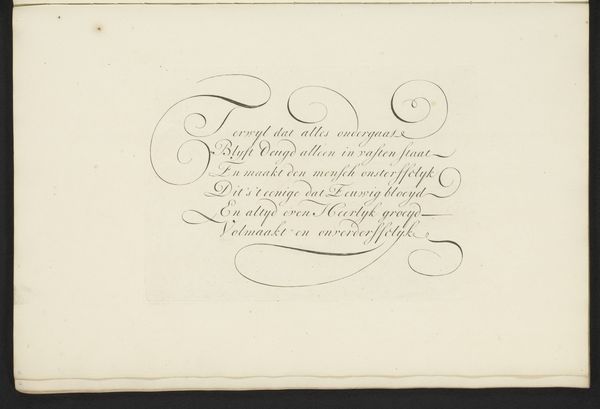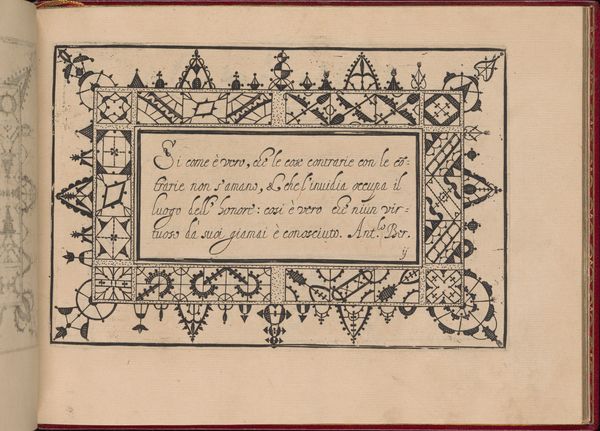
drawing, coloured-pencil, paper, pencil, pen
#
drawing
#
aged paper
#
coloured-pencil
#
sketch book
#
hand drawn type
#
paper
#
personal sketchbook
#
coloured pencil
#
romanticism
#
pencil
#
ink colored
#
pen and pencil
#
pen work
#
sketchbook drawing
#
pen
#
sketchbook art
#
miniature
Dimensions: height 105 mm, width 171 mm
Copyright: Rijks Museum: Open Domain
Editor: Here we have "Tekst boven een bij elkaar gebonden roos en vergeet-me-nietje," likely from between 1770 and 1816, created by an anonymous artist. It’s a drawing in colored pencil, pen, and ink on paper. There's something so intimate and personal about this work, almost like finding a hidden message tucked away in an old book. What strikes you about this piece? Curator: Well, looking at the drawing through a socio-political lens, this "hidden message" aesthetic speaks volumes. Miniature art, and particularly personal sketchbooks like this, often became spaces where individuals—especially women, during this period—could express themselves outside of the strictures of the public sphere. The use of floral symbolism becomes incredibly powerful; what appears as a simple, romantic gesture could, in fact, represent a complex articulation of love, memory, and even resistance. Editor: Resistance? In a floral drawing? That’s interesting. Curator: Absolutely. Consider the forget-me-not, a symbol of remembrance. Remembrance of what, exactly? And the tied rose... is it a symbol of bound love, or a stifled passion? The accompanying text, in German, adds another layer. How does the text and the drawing work together? Does it tell a story? Does the story amplify a message beyond sentimentality? By carefully considering this piece as both an intimate expression and a product of its time, we uncover how seemingly delicate artwork could serve as a potent vehicle for personal and perhaps even subtly subversive narratives. It reflects identity, gender, and politics in the margins, if you will. Editor: So, it's not just a pretty picture. It's a glimpse into someone’s inner world, shaped by their social context. I never considered it that way. Curator: Exactly! And by reading art with this awareness, we can reveal the intricate tapestries of history, one artwork at a time. Editor: This was really eye opening! I will definitely be looking at artworks differently.
Comments
No comments
Be the first to comment and join the conversation on the ultimate creative platform.

